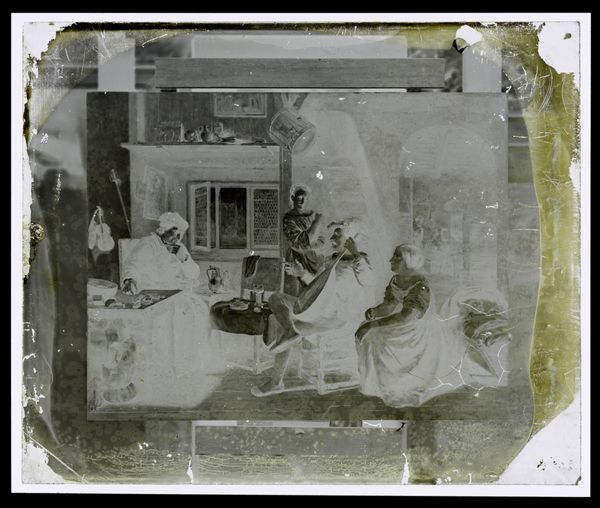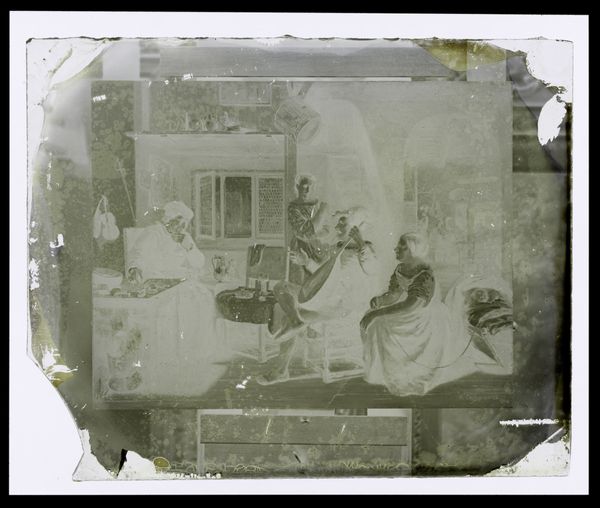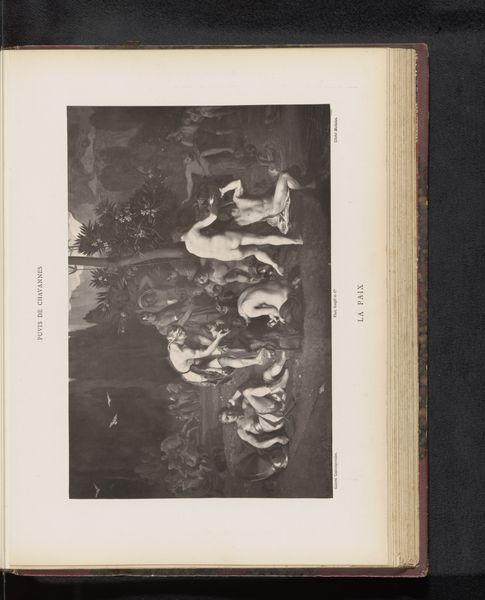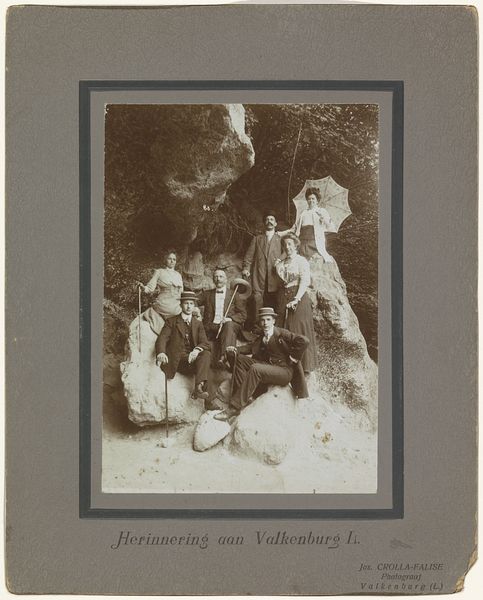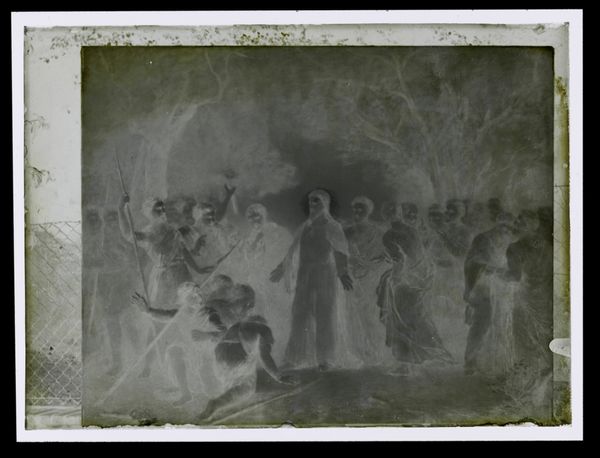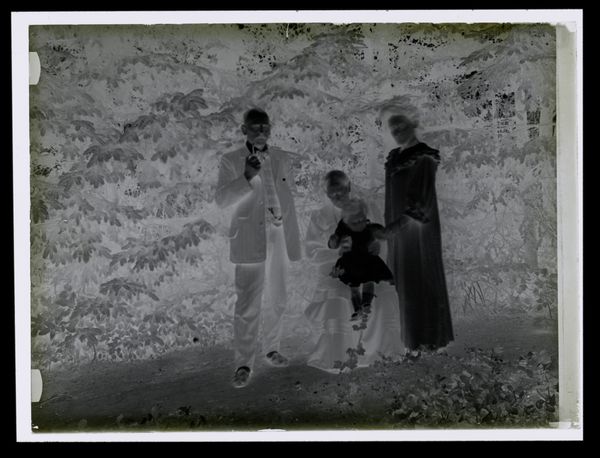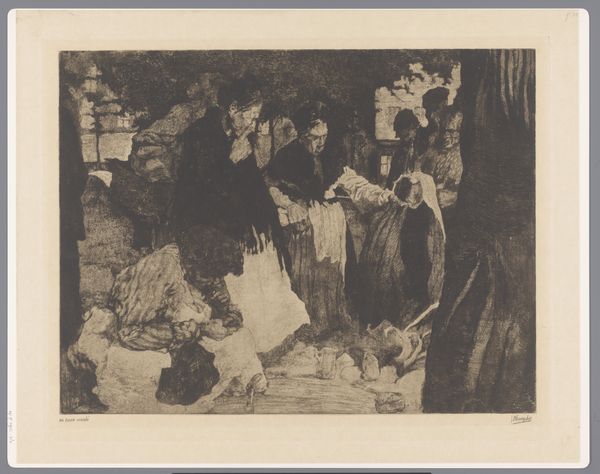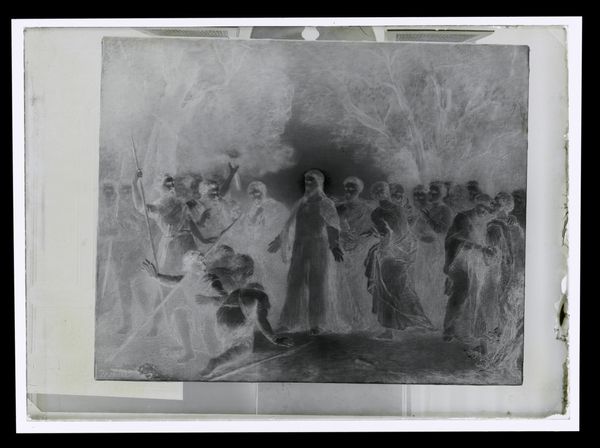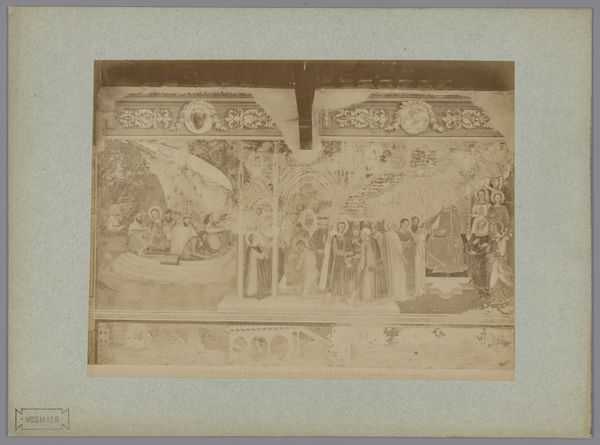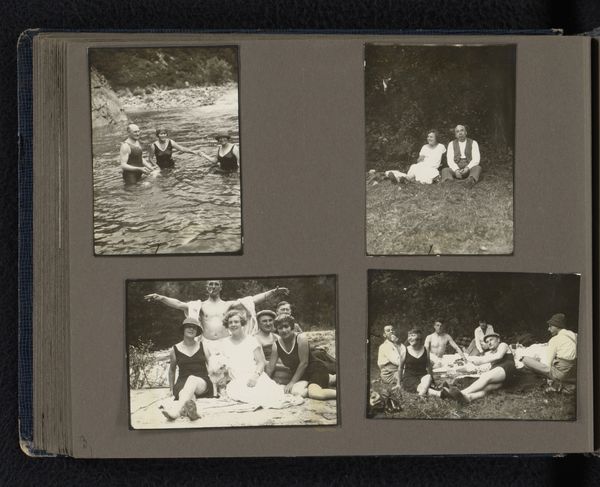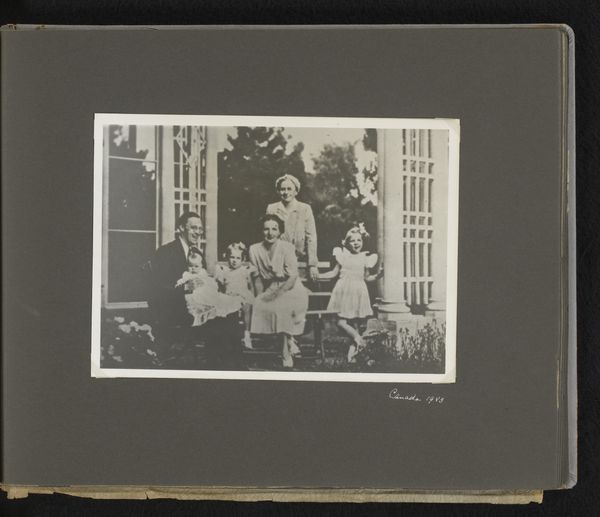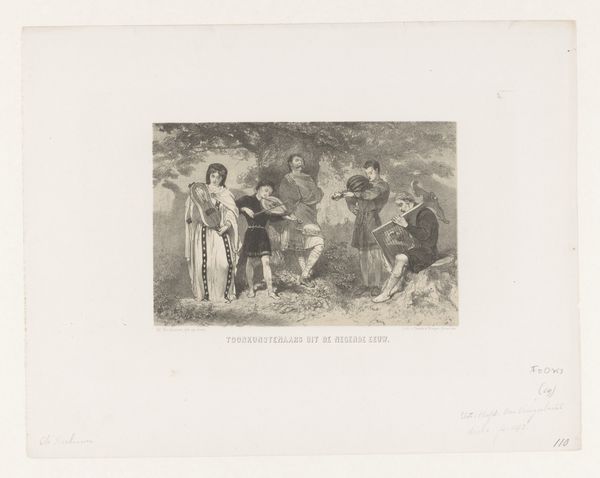
Fotoreproductie van een schilderij van een groep mensen bij een waterput c. 1865 - 1900
0:00
0:00
Dimensions: height 155 mm, width 182 mm
Copyright: Rijks Museum: Open Domain
Curator: So, here we have an intriguing gelatin-silver print, probably created sometime between 1865 and 1900, a photographic reproduction of a painting entitled "Fotoreproductie van een schilderij van een groep mensen bij een waterput", or a photographic reproduction of painting of a group of people by a water well. Editor: Wow, it's got a dreamy, ethereal vibe, almost like looking at a faded memory. The way the light and shadows play is mesmerizing, making the figures seem both present and distant at the same time. The negative qualities, or the inversion of expected lights and darks, gives this rendition a ghostly appearance. Curator: Yes, it’s fascinating how the print medium transforms the original artwork. It takes something rooted in paint and brushstrokes and reproduces it via chemical processes. And because this piece is a photographic reproduction of an earlier painting, we must think about the labor of copying images, of translating artistry into industry and consumption. Editor: It's as if we're seeing a story unfolding. Those gathered by the waterwell are in dialogue, whispering secrets. And look at the frame! Intricate carvings. Curator: You are right about the frame, but there may also be more subtle factors to examine, such as whether it was made in-house by the photographer, who may have added to their role the business and artisanal side of the photography industry. The details in that frame, and the image’s transition to an artistic style and subject, could be a marketing feature, designed for wealthier audiences, in addition to the intrinsic artistic interest in making photographs after older genre paintings and history paintings. Editor: Absolutely. I love how photography can echo or reinvent styles in painting. But even as we break it down, thinking of the means and work behind its creation, there's a quality in this image that holds onto its mysteries. I keep coming back to the emotion. I see figures, but my mind fills the void. Curator: And so, reflecting on the materials, methods, and social factors behind this print gives us a better awareness and more holistic appreciation. Editor: Agreed. Sometimes a glimpse is enough to spark a world of associations, isn't it?
Comments
No comments
Be the first to comment and join the conversation on the ultimate creative platform.
